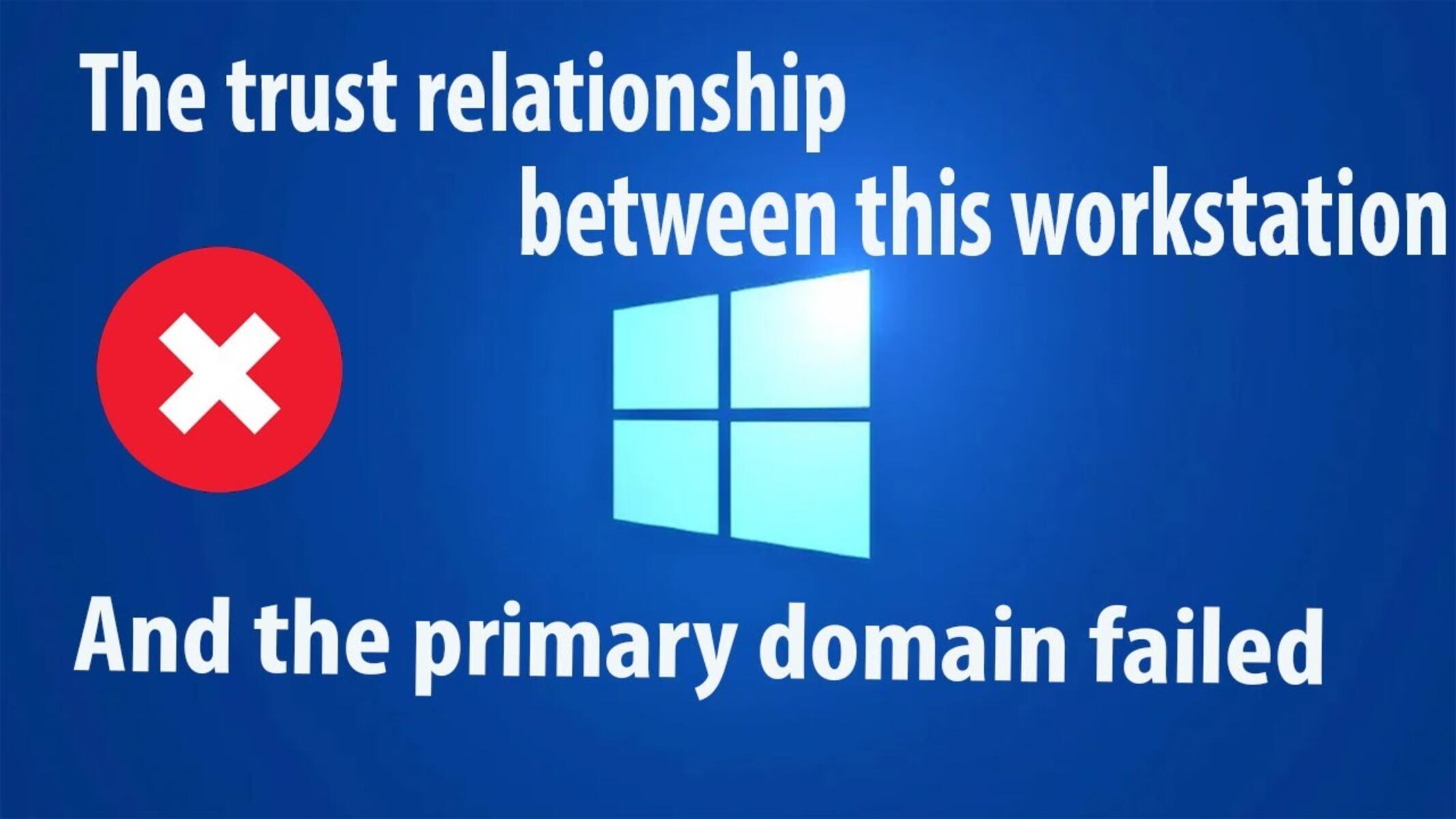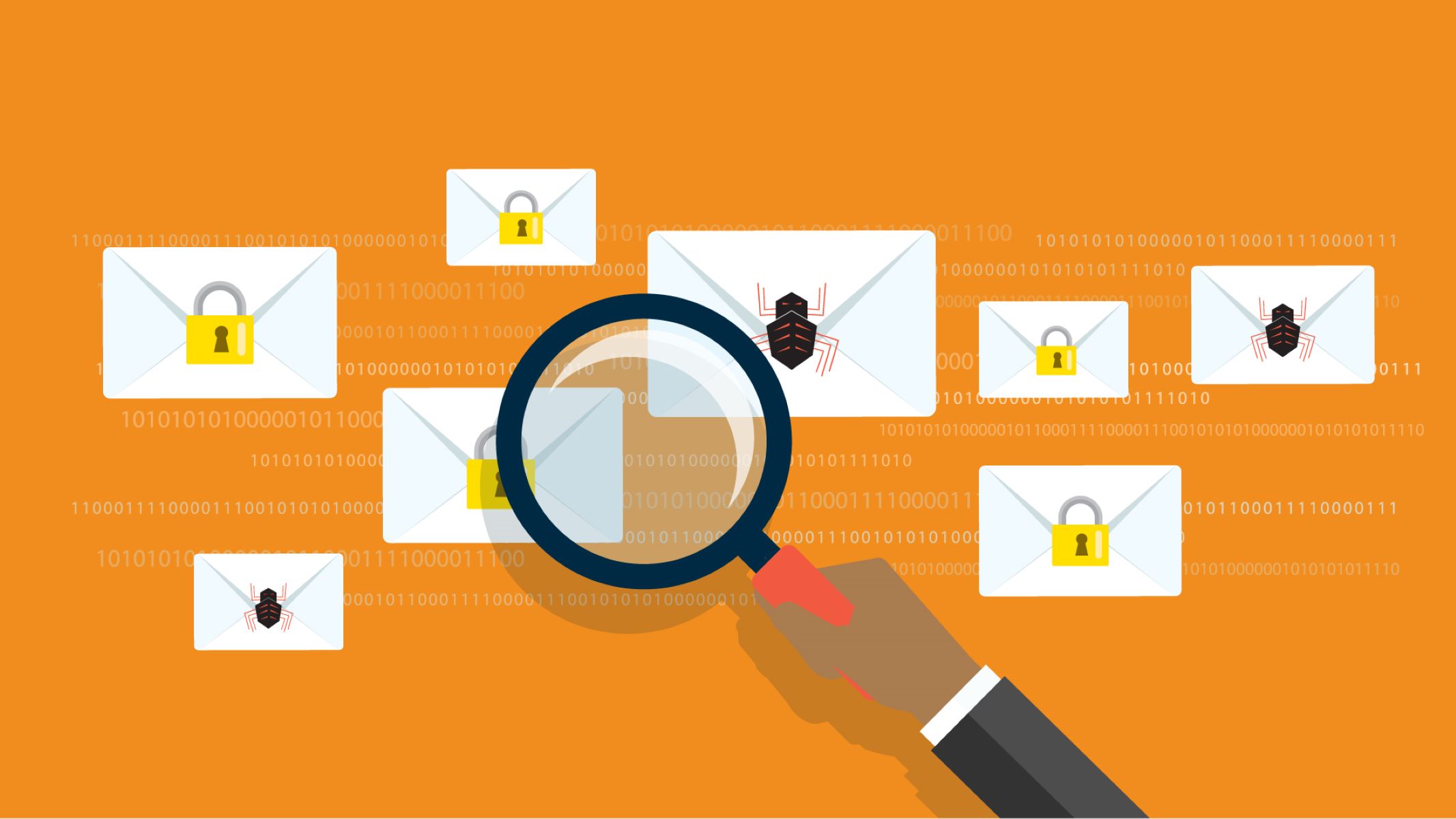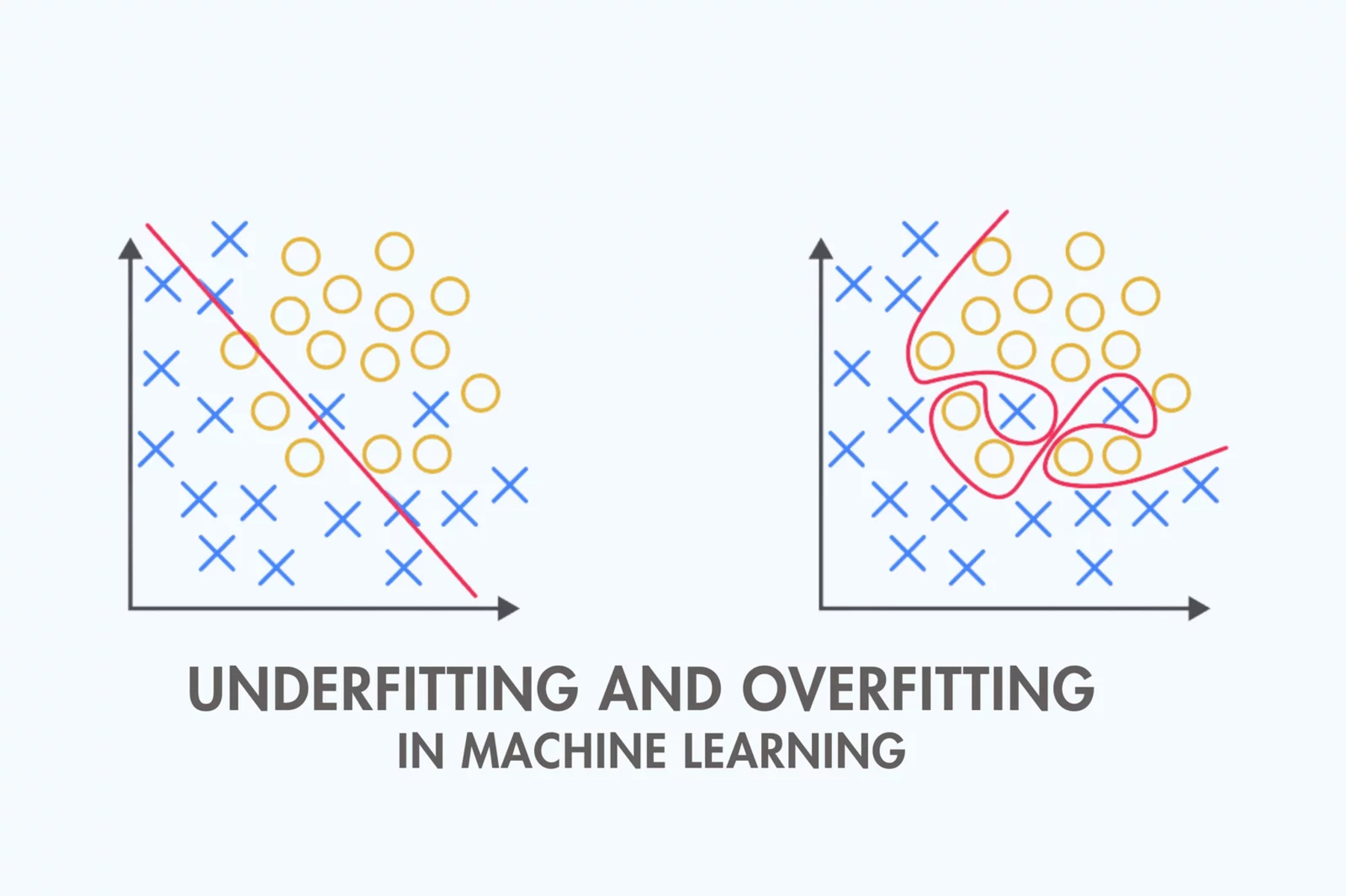Introduction
A trust relationship is a critical component in the interaction between a workstation and a domain in a network. It establishes a level of trust and communication between the two entities, allowing users to authenticate and access resources across the network seamlessly. However, there are instances when this trust relationship can fail, resulting in authentication issues and restricted access to network resources.
Understanding why the trust relationship between a workstation and the primary domain fails is crucial in troubleshooting and resolving the issue. In this article, we will explore the causes behind a failed trust relationship and provide practical solutions to fix it.
When a trust relationship fails, it can be frustrating for both users and network administrators. This can result in productivity losses and can impact overall network performance. It is essential to address this issue promptly to restore normal network operations.
Throughout this article, we will provide step-by-step instructions on how to diagnose and troubleshoot trust relationship failures. By following these guidelines, you will be able to resolve the issue efficiently and effectively.
What is a trust relationship?
A trust relationship is a logical connection established between a workstation and a domain in a network. It allows the workstation to authenticate and access resources within the domain, such as files, applications, and other network services. In essence, it enables users to seamlessly navigate across the network, accessing the resources they need for their work.
Think of a trust relationship as a mutual understanding between the workstation and the domain. It is like a handshake that signifies trust and authorization. When a user logs in to a workstation, the workstation communicates with the domain controller to validate the user’s credentials and gain access to network resources. This communication happens through the trust relationship.
A trust relationship typically relies on secure protocols, such as Kerberos or NTLM, to ensure that the authentication process is secure and reliable. These protocols use encryption and validation mechanisms to prevent unauthorized access and protect sensitive data transmitted over the network.
Having a trust relationship in place is essential in a network environment that utilizes a domain-based infrastructure. It simplifies user management and access control, as well as enables centralized security policies and resource management.
It is important to note that trust relationships can be one-way or two-way. In a one-way trust relationship, typically known as a unidirectional trust, the trust flows from one domain to another. This means that users in one domain can access resources in the other domain, but not vice versa. In a two-way trust relationship, also known as a bidirectional trust, the trust flows in both directions, allowing users in both domains to access resources in either domain.
Now that we have a basic understanding of what a trust relationship is, let’s explore how it works and the possible causes of a failed trust relationship in the next sections.
How does a trust relationship between a workstation and a domain work?
To understand how a trust relationship between a workstation and a domain works, let’s delve into the underlying mechanisms that facilitate this connection.
When a user logs in to a workstation, the workstation initiates a request to the domain controller. The domain controller is a server that manages the network’s security and authentication processes. It verifies the user’s credentials and determines whether the user has the necessary permissions to access the network resources.
During the authentication process, the workstation and the domain controller communicate using various protocols, such as Kerberos or NTLM. These protocols ensure the secure exchange of information and help establish a trust relationship between the two entities.
The trust relationship is built upon a series of handshakes and encryption mechanisms. When the workstation sends a login request to the domain controller, the domain controller generates a ticket that contains the user’s credentials and other relevant information, such as the user’s group memberships and access privileges.
This ticket, known as a Kerberos ticket in the case of Kerberos authentication, is encrypted and sent back to the workstation. The workstation decrypts the ticket using a secret key and proves its authenticity to the domain controller. If the workstation successfully decrypts the ticket and proves its identity, the trust relationship is established, and the user gains access to the network resources.
The trust relationship also includes a trust password, which is a shared secret between the workstation and the domain controller. This password is periodically changed to ensure the security of the trust relationship. The workstation stores this password locally and uses it to authenticate with the domain controller during subsequent logins.
In summary, a trust relationship between a workstation and a domain is established through secure communication protocols and encryption mechanisms. It involves the exchange of encrypted tickets and the use of a trust password to validate the workstation’s authenticity. This trust relationship allows users to authenticate and access network resources within the domain seamlessly.
Now that we understand the basics of how a trust relationship works, let’s explore the possible causes of a failed trust relationship in the next section.
Causes of a failed trust relationship
A failed trust relationship between a workstation and a domain can occur due to various reasons. Identifying the underlying causes is crucial in troubleshooting and resolving the issue. Here are some common causes of a failed trust relationship:
- Change in computer account password: The trust relationship relies on a shared secret known as the trust password. If the trust password on either the workstation or the domain controller gets out of sync or is modified, it can lead to a failed trust relationship. This can happen due to a password change policy, a synchronization issue, or other security-related factors.
- Time synchronization issues: In a trust relationship, time synchronization between the workstation and the domain controller is vital. If the time settings on the workstation and the domain controller are significantly different, it can cause authentication failures and break the trust relationship. It is crucial to ensure that both the workstation and the domain controller have accurate and synchronized time settings.
- Network connectivity problems: A failed trust relationship can also be caused by network connectivity issues. If there are intermittent network disruptions, DNS issues, or firewall restrictions preventing communication between the workstation and the domain controller, it can lead to authentication failures and a broken trust relationship. Verifying network connectivity and resolving any network-related problems is essential in troubleshooting trust relationship failures.
- Workstation or domain controller malfunction: Hardware or software malfunction on either the workstation or the domain controller can also result in a failed trust relationship. This can be due to system crashes, disk failures, software misconfigurations, or other technical issues. It is important to diagnose and address any workstation or domain controller problems to restore the trust relationship.
- Active Directory replication issues: In a network environment with multiple domain controllers, replication issues within the Active Directory can impact the trust relationship. If there are inconsistencies or discrepancies in the directory data among the domain controllers, it can cause authentication problems and lead to a failed trust relationship. Conducting proper Active Directory maintenance and resolving replication issues is crucial in maintaining a healthy trust relationship.
- Expired or revoked certificates: Trust relationships can also involve the use of certificates for secure communication. If the certificates on either the workstation or the domain controller are expired, revoked, or not properly configured, it can result in authentication failures and a broken trust relationship. Ensuring the validity and proper configuration of certificates is essential in maintaining a working trust relationship.
These are some of the common causes of a failed trust relationship between a workstation and a domain. By identifying the specific cause behind the issue, network administrators can effectively troubleshoot and implement the necessary solutions to restore the trust relationship.
In the next section, we will outline the steps to fix a failed trust relationship.
How to fix a failed trust relationship
When a trust relationship between a workstation and a domain fails, it is crucial to address the issue promptly to restore normal network operations. Here are the steps to fix a failed trust relationship:
Step 1: Verify network connectivity
Start by verifying the network connectivity between the workstation and the domain controller. Ensure that there are no network disruptions, DNS issues, or firewall restrictions preventing communication. Test the connectivity using tools like ping or traceroute, and resolve any network-related problems that may be causing the trust relationship failure.
Step 2: Check the date and time on both the workstation and the domain controller
Misaligned time settings can cause trust relationship failures. Make sure that the date and time on both the workstation and the domain controller are accurate and synchronized. If the time settings are significantly different, correct them and restart the affected systems to update the time settings.
Step 3: Reset the computer account for the workstation
If the trust password or other computer account attributes have become out of sync or corrupted, resetting the computer account can often resolve the trust relationship issue. On the domain controller, disable the computer account for the affected workstation, wait for a few minutes, and then re-enable it. This will trigger a password reset for the computer account and help restore the trust relationship.
Step 4: Rejoin the workstation to the domain
If the above steps did not resolve the trust relationship failure, you may need to rejoin the workstation to the domain. Remove the workstation from the domain by joining it to a workgroup and restart the system. Then, join the workstation back to the domain, ensuring that you provide the correct credentials and follow the domain join process accurately. This will rebuild the trust relationship between the workstation and the domain.
Once you have completed these steps, test the trust relationship by logging in to the workstation and accessing network resources. If the trust relationship is successfully established, you should be able to authenticate and access resources without any issues.
It is important to note that fixing a failed trust relationship may require administrative privileges and expertise. If you are unsure or uncomfortable performing these steps, consult with your network administrator or IT support team for assistance.
By following these steps, you can troubleshoot and resolve a failed trust relationship between a workstation and a domain. However, it is essential to address the root cause of the trust relationship failure to prevent future occurrences and ensure the stability and security of your network environment.
Step 1: Verify network connectivity
The first step in fixing a failed trust relationship is to verify the network connectivity between the workstation and the domain controller. Network disruptions, DNS issues, or firewall restrictions can prevent proper communication and lead to trust relationship failures. Follow these steps to ensure network connectivity:
- Check network cables and connections: Ensure that all network cables connecting the workstation and the domain controller are securely plugged in. If you are using a wired connection, make sure the Ethernet cable is properly connected. For wireless connections, ensure that the workstation is within range of the network and that Wi-Fi is enabled.
- Test network connectivity: Use network diagnostic tools like ping or traceroute to test the connectivity between the workstation and the domain controller. Open the Command Prompt on the workstation and enter the IP address or hostname of the domain controller followed by the ping command (e.g.,
ping 192.168.0.1). If the workstation receives replies from the domain controller, it indicates that network connectivity is established. If not, troubleshoot and resolve any networking issues that may be causing the failure. - Check DNS configuration: Ensure that the workstation is configured to use the correct DNS server. Incorrect DNS settings can prevent proper name resolution and hinder communication with the domain controller. Verify the DNS settings on the workstation by going to the Network and Sharing Center, selecting the network connection, and checking the DNS server address. Make sure it matches the DNS server used by the domain controller.
- Check firewall settings: Firewalls can restrict incoming and outgoing network traffic, potentially blocking the communication required for the trust relationship. Verify that the firewall settings on both the workstation and the domain controller allow the necessary network protocols and port numbers. Disable the firewall temporarily for testing purposes and check if it resolves the trust relationship failure. However, only do this in a controlled and secure environment and remember to re-enable the firewall afterward.
Verifying network connectivity is an important step in fixing a failed trust relationship. Ensuring that the workstation and the domain controller can communicate without disruptions or restrictions lays the foundation for a successful resolution. If network connectivity issues persist after completing these steps, consider seeking assistance from your network administrator or IT support team.
Step 2: Check the date and time on both the workstation and the domain controller
Incorrect date and time settings can cause trust relationship failures. It is essential to ensure that the date and time on both the workstation and the domain controller are accurate and synchronized. Follow these steps to check and correct the date and time settings:
- Compare date and time: On the workstation, locate the date and time display in the taskbar or system tray. Compare it with the date and time on the domain controller. If there is a significant difference, proceed to the next step.
- Open Date and Time settings: On the workstation, right-click the date and time display and select “Adjust date/time” or “Date and time settings.” On the domain controller, perform the corresponding action to open the date and time settings.
- Set correct date and time: In the date and time settings, ensure that the date, time, and time zone are correctly configured. If necessary, adjust them to match the date and time on the domain controller. You can manually set the date and time or click the “Sync now” or “Update now” button to synchronize with an internet time server.
- Restart the workstation and domain controller: After correcting the date and time settings, restart both the workstation and the domain controller. This ensures that the new date and time settings take effect.
By checking and correcting the date and time settings on both the workstation and the domain controller, you eliminate a common cause of trust relationship failures. Proper synchronization of date and time is crucial for secure authentication and establishing a trust relationship between the two entities.
If the trust relationship failure persists after performing these steps, it may indicate other underlying issues. In that case, proceed to the next steps outlined in fixing a failed trust relationship.
Step 3: Reset the computer account for the workstation
If the trust password or other attributes of the computer account for the workstation have become out of sync or corrupted, resetting the computer account can often resolve the trust relationship issue. Follow these steps to reset the computer account:
- On the domain controller, disable the computer account: Access the Active Directory Users and Computers management console on the domain controller. Locate the computer account for the affected workstation and right-click on it. Select “Disable Account” from the context menu. Disabling the account will temporarily remove it from the network to prepare for the account reset.
- Wait for a few minutes: It is crucial to wait for a few minutes to allow the changes to propagate across the domain. This period ensures that all domain controllers are aware of the disabled computer account. This step is especially important in larger Active Directory environments where multiple domain controllers are involved.
- On the domain controller, re-enable the computer account: Once the waiting period is over, right-click on the disabled computer account for the workstation and select “Enable Account” from the context menu. This action will reactivate the account and trigger a password reset for the computer account.
By resetting the computer account, you generate a new trust password and other attributes that are essential for the trust relationship to be established. This process helps eliminate any synchronization issues or corruptions that may have caused the failed trust relationship.
After completing these steps, attempt to log in to the workstation and access network resources. If the trust relationship has been successfully restored, you should be able to authenticate and access the resources without encountering any issues.
If the trust relationship failure persists even after resetting the computer account, proceed to the next step in troubleshooting the failed trust relationship.
Step 4: Rejoin the workstation to the domain
If the previous steps did not resolve the trust relationship failure, you may need to rejoin the workstation to the domain. This process rebuilds the trust relationship between the workstation and the domain. Follow these steps to rejoin the workstation to the domain:
- Remove the workstation from the domain: On the workstation, navigate to the Control Panel and open the System settings. Click on the “Change settings” or “Change” button next to the computer name. In the System Properties window, select the “Network ID” or “Change” button to initiate the domain removal process. Follow the on-screen prompts to remove the workstation from the domain. During this process, you will need to provide administrative credentials.
- Restart the workstation: After successfully removing the workstation from the domain, restart the system to complete the removal process. It is important to allow the system to reboot fully before proceeding to the next step.
- Join the workstation back to the domain: Once the system has restarted, access the System settings again. Click on the “Change settings” or “Change” button next to the computer name. In the System Properties window, select the “Network ID” or “Change” button and choose the option to join the workstation to the domain. Enter the domain name and provide the necessary administrative credentials when prompted. Follow the on-screen prompts to rejoin the workstation to the domain.
- Restart the workstation again: After successfully joining the workstation back to the domain, restart the system once more to finalize the process. Allow the system to reboot fully.
By rejoining the workstation to the domain, you rebuild the trust relationship and establish a fresh connection between the workstation and the domain controller. This step is often effective in resolving persistent trust relationship failures.
After completing these steps, attempt to log in to the workstation and access network resources. If the trust relationship has been successfully restored, you should be able to authenticate and access the resources without any issues.
If, after rejoining the workstation to the domain, the trust relationship failure persists, it may indicate deeper underlying issues. In such cases, it is advisable to seek assistance from your network administrator or IT support team for further investigation and resolution.
Conclusion
A failed trust relationship between a workstation and a domain can disrupt normal network operations and hinder user access to resources. However, by following the troubleshooting steps outlined in this article, you can effectively diagnose and resolve trust relationship failures.
First, it is crucial to verify network connectivity and ensure there are no disruptions or restrictions preventing communication between the workstation and the domain controller. Next, checking the date and time settings on both systems is essential to ensure synchronization, which is vital for a successful trust relationship.
If the issue persists, resetting the computer account for the workstation can often solve the problem by generating a new trust password and reestablishing the trust relationship. In cases where all previous attempts fail, rejoining the workstation to the domain rebuilds the trust relationship from scratch.
Remember, troubleshooting trust relationship failures may require administrative privileges and expertise. If you are unsure or uncomfortable performing these steps, it is recommended to seek assistance from your network administrator or IT support team.
By promptly addressing and resolving failed trust relationships, you can minimize productivity losses, maintain network security, and ensure seamless user authentication and access to network resources.
Stay vigilant and proactive in diagnosing and resolving trust relationship failures to ensure the smooth operation of your network infrastructure and the uninterrupted productivity of your users.

























